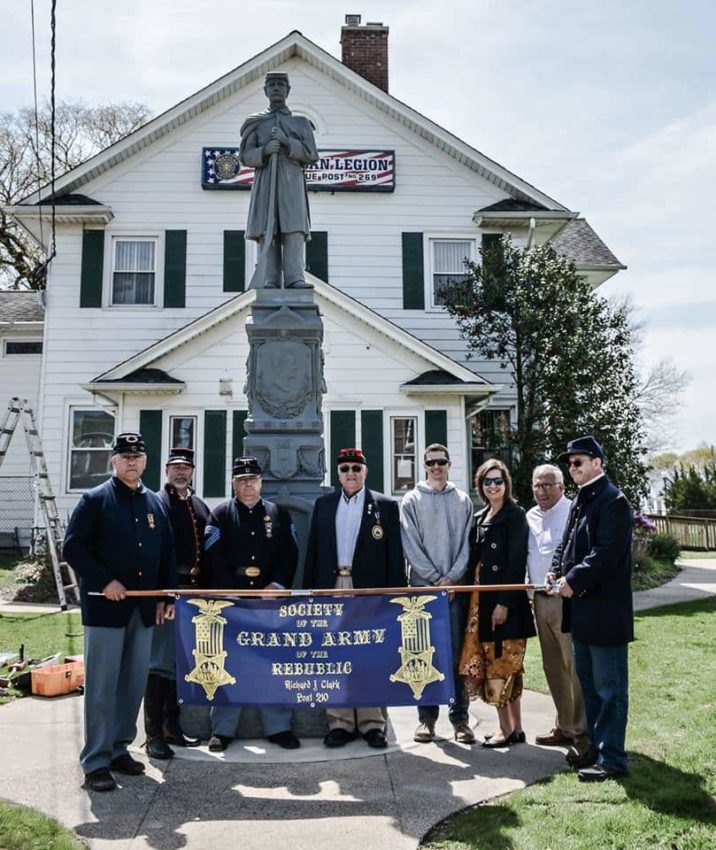With the emergence of spring, it was time for the McKay Lodge Conservation staff to reinstall the Grand Army of the Republic (GAR) Memorial after a conservation treatment of the zinc monument that normally stands in the Village of Patchogue, New York in front of the side entrance for the American Legion Post 269. The piece was cast in zinc around 1888 by the Monumental Bronze Company, Bridgeport, Connecticut.
Time is often not on the side of these commanding tributes to the Americans who served in the Civil War. Zinc alloys are soft, and a common condition issue for these types of artifacts made from zinc is that the metal begins to sag, or creep, under its own weight. The metal can also become brittle, leading to cracks in the substrate. The loss of structural integrity over time creates the need for conservation of the zinc monument. In some cases, previous invasive restoration techniques have also caused additional damage.
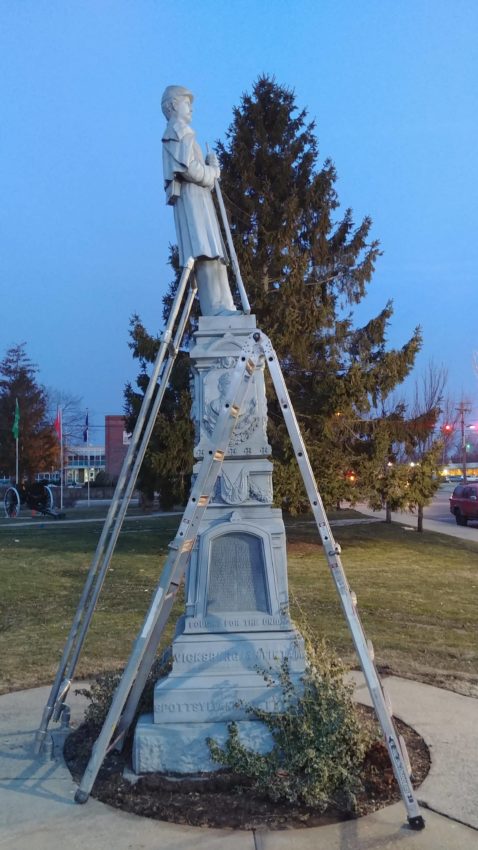
For the GAR Memorial in Patchogue, the primary condition issue was the loss structural integrity due to an inherent vice, simply put, that the sculpture was made from cast zinc. This condition issue was readily observed when viewing the GAR Memorial in profile; the top figure had a considerable lean, and would have eventually fallen without intervention. Lower tiers of the monument also showed some warping at the sides due to the weight and pressure exerted from above.
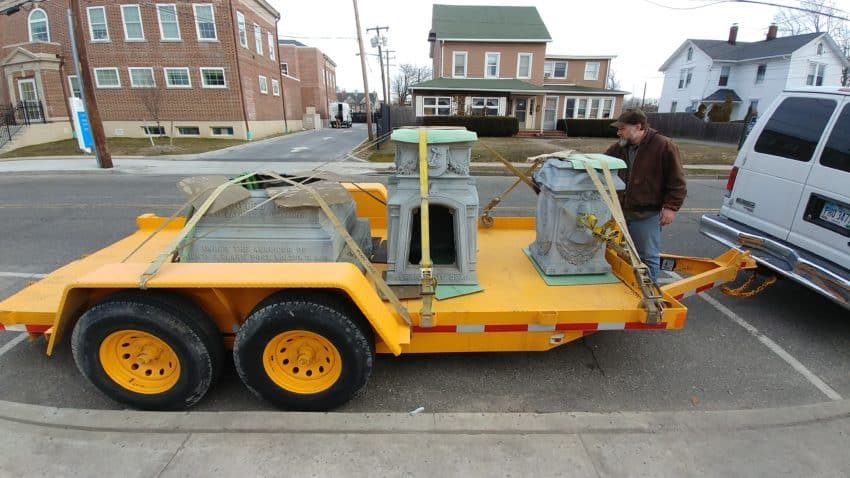
The zinc Memorial had been temporarily supported until it was deinstalled under the supervision of Thomas Podnar, Senior Sculpture Conservator of McKay Lodge Conservation Laboratory. Podnar is nationally recognized for his preservation of zinc and other historic monuments and memorials. For Podnar, the treatment would be straight forward: deinstall the monument, repair and straighten metal components, create a new internal armature, resurface the exterior to ensure an even overall appearance, and reinstall the monument.
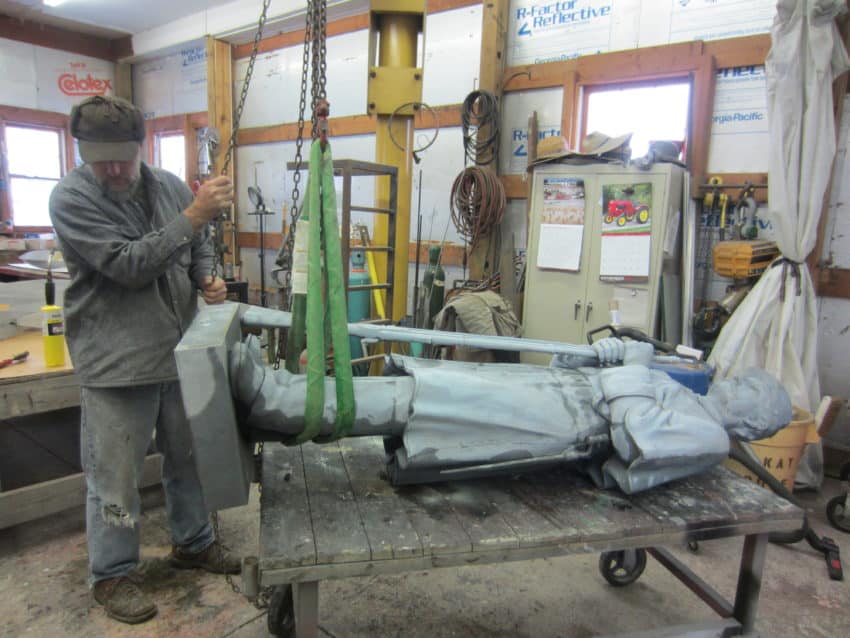
The sculpture was deinstalled in sections then loaded onto a trailer in order to transport them to our conservation lab facilities in Oberlin, Ohio just outside of Cleveland. Once the different sections were unloaded and registered, the conservation of the zinc monument could begin.
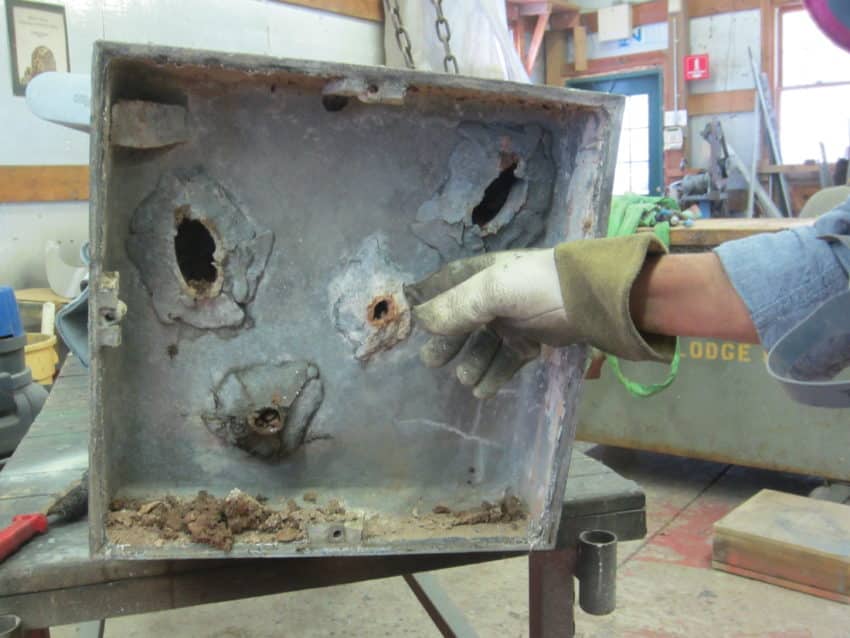
Podnar removed the previous zinc plate located on the bottom of the figure. As part of the treatment, a new internal base plate was fabricated of ¼ inch thick zinc plate and further reinforced with additional zinc plate. The lower sections of the monuments were straightened as possible in order to reduce the warped appearance of the monument.
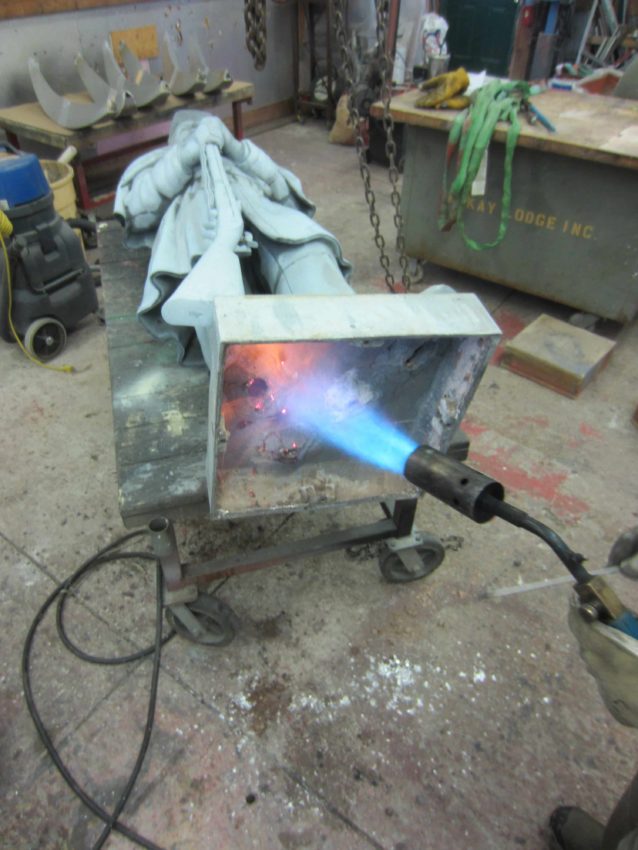
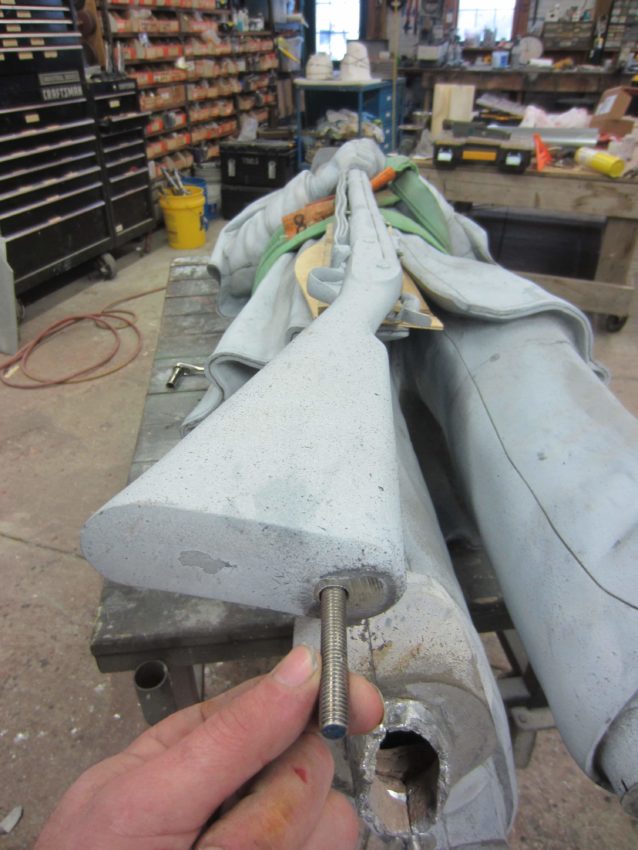
The next step is arguably the most critical in the conservation of the zinc monument, creating an internal stainless steel support. Emmett Lodge, Project Manager, and Curtis McCartney, Conservation Technician, assisted Conservator Podnar in completing the new internal support structure. The different sections will essentially hang on this new stainless steel. It serves as an internal armature, carrying the weight of the cast elements rather than have the cast elements rest upon each other. When all the sections are assembled, a small gap in between the different sections is produced, but not readily visible.

The exterior surfaces were then cleaned with media abrasive blasting to remove the appearance of repairs as well as years of oxidation. The final result is a surface that is more uniform in appearance, similar to when the sculpture was newly fabricated. As test assembly was conducted before the sculpture was reinstalled.
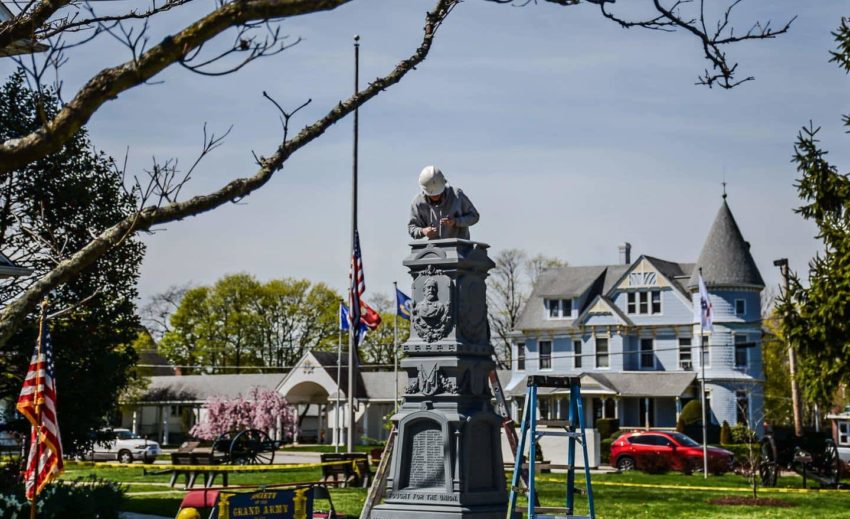
The sculpture was then transported back to New York and installed in its original location. McKay Lodge Conservation Laboratory is grateful for the warm reception and support of the local community of Patchogue, New York in the conservation of the zinc monument: Grand Army of the Republic (GAR) Memorial.
